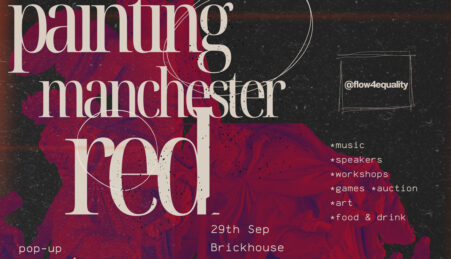
Humanity Hallows Issue 6 Out Now
Pick up your copy on campus or read online
By Bridget Taylor
This Humanities in Public event brought to life the complex relationship the writer Shelagh Delaney had with her Northern identity, drawing out how ‘the North’ has typically been represented in culture, and recognising that it has been, in some sense, ‘mythologised’. Photographer, explorer and Manchester Modernist Stephen Marland emphasised that “the city creates itself as a series of myths, stories, images, half-truths and jokes”, and so any kind of identity with it is always going to be a semi-mythologised one. Delaney seemed particularly conscious of this, as both films shown at the event merged a social realist, documentary-style of film-making, with surrealist elements that highlight some of these myths about the city and explore the sense of alienation that was being uncovered in society at the time.
Attendees at the event were treated to a screening of the 1967 film The White Bus, which took them on a surreal sightseeing tour of the city from the perspective of an unknown female protagonist. The unconventional tour took the viewer through industrial estates, past high-rise social housing, and into construction sites and factories – giving us a more realistic portrait of the actual workings of the city, beyond the usual tourist attractions. Throughout, the female protagonist remained largely silent, even though she is paid unwanted attention by several men. This passivity was frustrating, though as a device in the film it seemed to be a comment on women’s lack of agency in society at the time. However, by the end of the film, she is the only one left ‘alive’, suggesting that she has been the only agent all along.
The fact that the sightseers, including her, are passive ‘consumers’ of the city reinforced a feeling of alienation from it, also emphasised by the destruction of some of the derelict houses at the end – looking backwards to the Blitz, but also forwards perhaps to the threat of nuclear war. The sense of being caught between two eras was also brought out by the film cutting between black-and-white shots and vivid colour, suggesting that, though at that time they felt they were on the brink of modernity, it was not a particularly benign influence.

A sense of disconnection was also very present in the 1967 film Charlie Bubbles, the story of a successful writer who has left his Northern home to make a new life for himself in London. The film takes a modernist approach, exploring the way the fragmentation of modern, technological consumer society has distanced us from each other, compounded by the way climbing the social ladder has distanced Charlie from his working class roots. Charlie (Albert Finney) struggles to connect with anyone; instead of spending time with his son, he prefers to escape his responsibilities by having food fights in restaurants. Yet this also speaks of his need to escape modern life, where he has become a consumer object through his incredibly profitable writing.
The sense of distance is emphasised by the constant possibility of human experience being captured and mediated through a screen, which also makes that experience ‘consumable’. In Charlie’s house, he watches the other rooms through TV monitors, and the viewer does too, which implicates us in this distancing. Similarly, when they go ‘up North’ the character of Eliza (Liza Minelli) spends all her time taking pictures, rather than directly experiencing the city. The trip to ‘the North’ (as it is always described in the film), plays with Northern tropes; at one point a brass band appears from nowhere on a derelict housing estate and welcomes them in to the city. Yet the fact that it is always described as ‘the North’ encourages the idea that it is a kind of mythical, exotic place, seen from an outsider’s perspective, and fundamentally mysterious.
Assistant Curator at the V&A Florian Clayton suggested that the film could be semi-autobiographical as Delaney similarly gained success as a writer and moved to London, distancing her from her Salford roots. Manchester Met Lecturer in English David Wilkinson suggested, however, that the film’s approach is “typical of certain forms of Mancunian culture, which include elements of fantasy – bringing together the two threads of surrealism and social realism,” which situates her as part of a Northern tradition. Perhaps she was not so distant from her roots as she thought. In both films there seemed to be an interesting tension between criticising people making a ‘spectacle’ of the North, and participating in that mythologizing herself, which seems to reflect this complex relationship of her both identifying with and distancing herself from her roots.
An audience member praised the event, saying, “The audience seemed to engage with the films really well, the experts knew their stuff and could speak on different aspects of the films. The films, the audience and the panel were three very enthusiastic forces all coming together.”
For more information on upcoming events in the 2017 Humanities in Public festival, visit the festival website.







Leave a reply